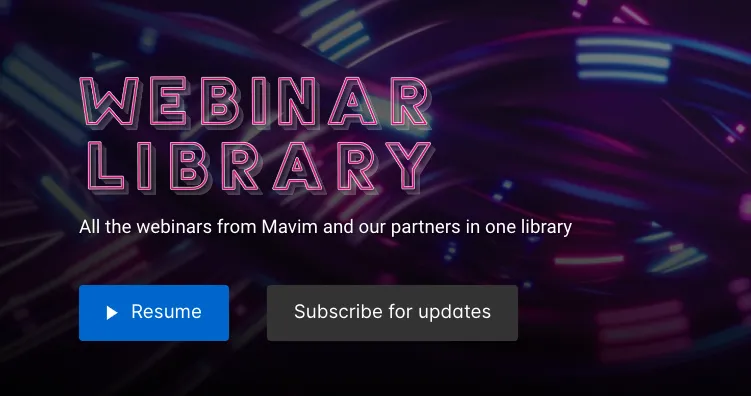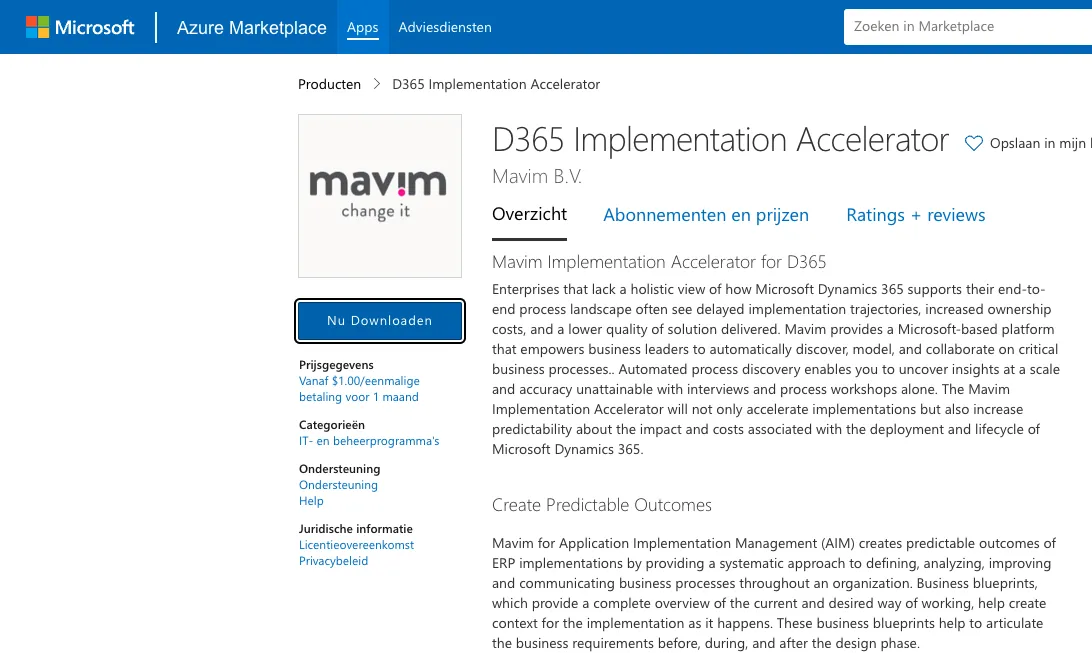How Mavim makes your ERP move make sense
Whatever ERP you use, you’ve probably had it a few years. Perhaps you started simple. But now you’ve got different versions at multiple sites, with dozens of local customizations and diverse data sources solving different problems. Such add-ons are the duct tape of business operations, sometimes messy, but always vital.
By now—especially if you’re on older releases of AX or SAP—you’re having to move it all to the cloud, in all its barely-documented complexity, however well your current setup seems to work. It’s a problem facing thousands of companies. And it’s one Mavim is ready to solve.
Mavim does business processes: how to explore them, transform them, improve your business as a result. It isn’t some startup-of-the-month with a hot idea: with offices in Europe and the USA, our story goes back over 25 years. So we don’t have our heads in the clouds—but we do want to help you head to the cloud, and make your ERP migration successful. This “cheat sheet” of resources will give you some ideas.
The Mavim ITP: an intelligent platform for migrating ERP
When you think about it, all an ERP does is help you get a grip on processes: “the way we do things around here”. Good processes are the source of competitive advantage, of effective people, of customer focus. It’s your processes that make you unique.
But to improve them, you need to understand them. The ERP Implementation Accelerator is how you do it—work out which processes are working and which need work. Then move them smoothly into a cloud-native ERP like Microsoft’s Dynamics 365 for Finance & Operations.
It’s part of Mavim’s Intelligent Transformation Platform, a set of tools aimed squarely at showing your processes who’s boss. Let’s see what each part brings to the party.
Process Mining: understand the Big Picture of your business
Most people don’t know in detail how their work affects the company as a whole. Even fewer realize how many of their processes contain bottlenecks and blockages; when you ask your people to describe processes, you’ll get a lot of conflicting answers. So your first task in moving your ERP to the cloud is to understand the Big Picture. You do it with Mavim Process Mining.
Process mining uncovers the real story, as it unfolds, in the real world. Not by asking people what they do—but by connecting to actual transactions and workflows within your business, as they happen. Building a complete and honest operational model, warts and all. Hot tip: do process mining first.
Business Process Management: plan your perfect world on paper
Where PM ends, BPM starts. Two sides of the same coin: one a view of the world as it is, the other an ambition of what you’d like it to be. Dividing your migration plan this way—the real situation, and an optimized one you’d like as a successful outcome—is the basis of Mavim’s Intelligent Transformation Platform.
Mavim Business Process Management puts a Digital Twin of your Organization in your hands: a data model of your business processes you can tease and tweak to drive out inefficiencies and wastages, even replace whole sets of processes wholesale. And then see whether they work the way you’d intended—from the effects they have on timescales, resource requirements, human capital—before rolling them out.
The ERP Implementation Accelerator: where the magic happens
So: that’s your operational model explored, and your target model defined. So far, so great. Next up is to wrangle the best of those processes from your current ERP to your shiny new cloud-native one, like Dynamics 365. Back to our Implementation Accelerator specially created for moving to D365FO.
In it you’ll find ready-to-roll methods and models for moving every process mapped in your old ERP to your new one in the cloud, even templates specific to your industry sector. And there’s one big advantage to going there with Mavim…
The cherry on the cake: no new applications to learn
…the Mavim ITP isn’t a standalone application. It works through applications you and your people know already. Like Microsoft Visio. Excel. PowerBI. Build processes and turn a critical eye on duplications, variants, bottlenecks—in diagrams and data sources everyone’s familiar with. It’s the way Mavim likes to work: at your side, never out in front.
Familiarity breeds understanding. It fosters acceptance of any business transformation, helps people understand why you’re changing the way they work. That means when you migrate, you’re taking your people along. And that, alone, solves a problem with over 75% of all ERP rollouts.

Learn more, with a front row seat for our webinar series
Intrigued? Most people are. But you’ve doubtless got further questions. Why not get them answered by booking your seat at Mavim’s next webinar?
It’s where you can learn more about Mavim’s Intelligent Transformation Platform—and the parts that go into it. (Sign up and you can view past events, too.)
Why wait? Try the Mavim ITP for yourself—today
If you’re moving to Dynamics 365, here’s a parting thought. Built on Azure, and making use of Microsoft applications like Visio and PowerBI, Mavim isn’t just cloud-native; it’s Microsoft cloud-native.
See Mavim at the Microsoft Azure Marketplace: Microsoft Azure Marketplace
That’s the Intelligent Transformation Platform in one: mine, design, improve. And it’s how you implement Dynamics—or other ERP systems!—in a new home in the cloud, with less pain and greater speed.
Or if you’d like to talk first, contact Mavim here. And let’s start mining, designing, and improving.



